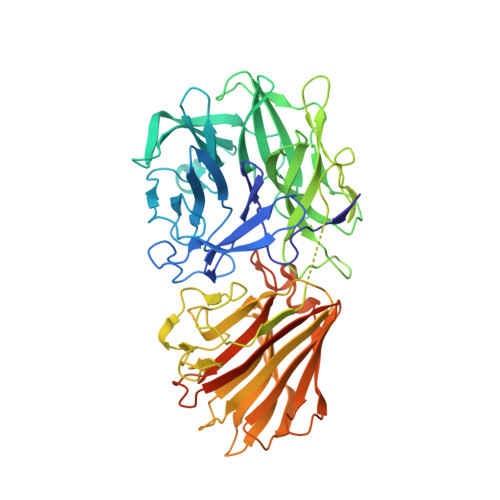Structural basis of product inhibition by arabinose and xylose of the thermostable GH43 beta-1,4-xylosidase from Geobacillus thermoleovorans IT-08.
Rohman, A., van Oosterwijk, N., Puspaningsih, N.N.T., Dijkstra, B.W.(2018) PLoS One 13: e0196358-e0196358
- PubMed: 29698436
- DOI: https://doi.org/10.1371/journal.pone.0196358
- Primary Citation of Related Structures:
5Z5D, 5Z5F, 5Z5H, 5Z5I - PubMed Abstract:
Complete degradation of the xylan backbone of hemicellulosic plant cell walls requires the synergistic action of endo-xylanases and β-1,4-xylosidases. While endo-xylanases produce xylooligosaccharides from xylan, β-1,4-xylosidases degrade the xylooligosaccharides into xylose monomers. The glycoside hydrolase family 43 β-1,4-xylosidase from Geobacillus thermoleovorans IT-08 is a promising, heat stable catalyst for the saccharification of hemicellulosic material into simple fermentable sugars, but it is competitively inhibited by its products arabinose and xylose. As a first step to help overcome this problem, we elucidated crystal structures of the enzyme in the unliganded form and with bound products, at 1.7-2.0 Å resolution. The structures are very similar to those of other enzymes belonging to glycoside hydrolase family 43. Unexpectedly, the monosaccharides are bound in very different ways. Arabinose preferentially binds in subsite -1, while xylose exclusively interacts with subsite +1. These structures and sugar binding preferences suggest ways for improving the catalytic performance of the enzyme by rational mutational design.
Organizational Affiliation:
Department of Chemistry, Faculty of Sciences and Technology, Universitas Airlangga, Surabaya, Indonesia.
















